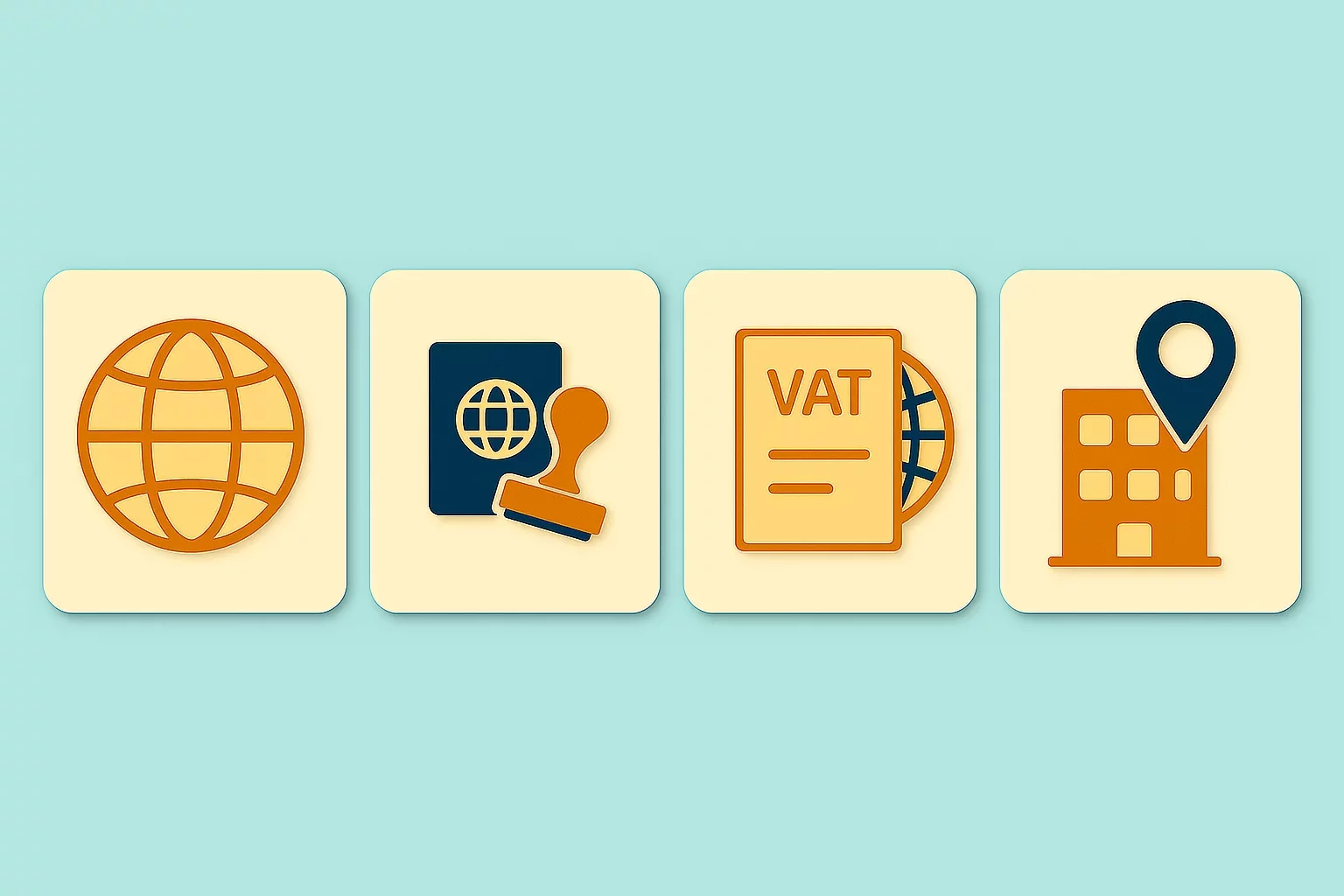Digital Economy Taxation: VAT/GST on Digital Services vs. DST Explained

The rapid expansion of the digital economy, which was further accelerated by the COVID-19 pandemic, transformed global commerce and enabled businesses to reach consumers in countries without physical presence. This presented a massive opportunity for companies and convenience for consumers. Still, it also presented a critical challenge for tax authorities, as traditional tax compliance models could not capture revenue from transactions relating to digital services.
Two primary mechanisms emerged to answer this challenge: VAT/GST on digital services and Digital Services Tax (DST). While both target digital companies, they differ fundamentally in structure, applicability rules, and economic impact on businesses.
VAT/GST on Digital Services: A Consumption-Based Tax
VAT/GST on digital services could be considered an extension of the traditional VAT/GST application, specifically designed to ensure that digital companies pay due VAT/GST in countries where consumption occurs. The primary objective of the VAT/GST on digital services is to subject foreign, non-resident, or overseas digital services providers or vendors to charge, collect, and remit VAT/GST in the country where the consumer is based.
Therefore, the VAT/GST on digital services aims to define the same VAT/GST rules for domestic and foreign digital companies. This policy protects domestic companies from unfair competition from foreign companies and ensures more revenue for the government budget.
However, registration, filing, payment requirements, and applicable VAT/GST rates vary from country to country. For example, countries like the United Kingdom, Mexico, and South Korea do not have a VAT/GST registration threshold for foreign digital services providers. This means that, depending on the country, foreign digital service providers must register for VAT/GST either before the first supply or by a specified deadline after making the first supply.
Other countries have defined a VAT/GST registration threshold, meaning foreign digital services providers must register only once they exceed the threshold. For example, in Australia, the GST registration threshold is AUD 75,000; in Japan, the consumption tax threshold is JPY 10 million (around USD 65,000); and in Norway, the VAT registration threshold is NOK 50,000 (around USD 4.500).
Additionally, countries define different filing requirements for VAT/GST returns, including monthly, bi-monthly, quarterly, semi-annual, and annual. Payment frequency is directly related to the filing frequency.
The applicable VAT/GST rates also differ between countries, adding to the complexity of the VAT/GST compliance and reporting requirements that digital companies operating in multiple countries must meet.
Finally, not all transactions are subject to VAT in every country. In most countries, only business-to-consumer (B2C) transactions fall under the scope of VAT on digital services. However, in countries such as South Africa and Indonesia, both B2C and business-to-business (B2B) transactions are subject to VAT.
Digital Services Tax: A Revenue-Based Tax
In contrast to the VAT/GST, which are consumption taxes, the Digital Services Tax (DST) is a revenue-based tax that directly applies to large multinational digital businesses. The DST is developed to subject the largest multinational digital companies that do not pay corporate income taxes in countries where they do not have a physical presence to pay taxes on the revenue they generate in those countries.
The DST is not an online sales tax, a profit tax, or an indirect or consumption tax such as VAT or GST. The DST is a percentage of gross revenues generated from specific digital activities, such as online advertising, marketplace intermediation, and data monetization. Therefore, unlike corporate income tax, which accounts for profitability, DST is imposed regardless of whether a company is making a profit.
To be subject to DST, a digital company typically must meet two revenue-based conditions. The first is that global revenue from digital services must be above EUR 750 million. The second is a local or national revenue condition or threshold.
For example, in Canada, the global revenue threshold is CAD 750 million, and the national revenue threshold is CAD 20 million. The threshold for gross global revenue in the UK is GBP 500 million, where at least GBP 25 million must be generated from UK users. Another example is France, where the global revenue threshold is EUR 750 million, and the national revenue threshold is EUR 25 million.
Once businesses meet all the requirements, they register for DST, submit required reports, and pay a tax on the specified percentage of national revenue. The applicable rates are 3% in Canada, 5% in France, and 2% in the UK.
Current Trends and Future of Digital Taxation
At this point, far fewer countries have implemented DST than in the case of VAT/GST on digital services. However, the number of countries implementing both taxes is increasing, and it is fair to say that this trend will continue.
The Philippines adopted and announced its national legislation implementing VAT on digital services. Rwanda and Botswana, two African countries, also publicly stated that they intend to implement similar VAT rules for foreign digital businesses. Finally, the EU is making further advancements in this field, especially with the newly adopted VAT in the Digital Age reformatory package.
The situation regarding the DST is not clear. Additional work, coordination, and agreements are needed globally. As the OECD continues to push for a worldwide solution with Pillar One and Pillar Two proposals, many countries have already taken further steps toward adjusting and changing DST requirements.
Therefore, Italy removed the EUR 5.5 million national DST threshold, leaving only the EUR 750 million global revenue threshold relevant to making the largest digital company liable to pay tax. With the removal of the national threshold, even companies with small digital activity in Italy must pay DST on any revenue they generate from their services there.
France also changed the DST rules and increased the applicable rate from 3% to 5%. Belgium announced that it would implement a 3% DST if there is no agreement at the EU or international level by 2027. New Zealand adopted the 3% DST but did not fully implement it due to objections and potential retaliation measures from the US, one of the loudest opponents of the introduction of DST. The reason for such objections is that most of the biggest US companies would be subject to DST.
However, the 2023 DST Act allows the New Zealand government to postpone its implementation until January 2030, implying that this tax will eventually be implemented.
Conclusion
To put things in more straightforward terms, VAT/GST on digital services is an indirect tax that consumers ultimately pay on the services provided to them by digital service providers. However, providers are responsible for charging, collecting, and remitting the VAT/GST according to country-specific rules and requirements.
On the contrary, the DST directly targets the revenues of large multinational digital companies to address perceived tax avoidance issues. Taxes coexist and create challenges for digital businesses operating in multiple markets.
Nevertheless, developing these tax policies will play a crucial role in shaping the future of the global digital economy and could potentially challenge the current business models of tech giants.
Source: VATabout - Understanding Latin America’s VAT Rules for Digital Service Providers, VATabout - EU - Concept and Taxability Rules for VAT on Digital Services and Electronically Supplied Services (ESS), VATabout - Canada's Digital Services Tax Act Explained: Scope, Impact & Compliance, PwC, KPMG

Featured Insights

Angola’s E-Invoicing Mandate: Phased Implementation Continues Into 2026
🕝 December 10, 2025
VAT Deduction and Business Succession: When Do Advisory Costs Serve the Company’s Interest?
🕝 December 8, 2025
Europe’s Plastic Fiscal Shift: Why Italy’s Plastic Tax Now Starts in 2027
🕝 December 3, 2025
The Decline of Low-Value Import Exemptions: Closing Gaps in Cross-Border E-Commerce
🕝 November 20, 2025More News from World
Get real-time updates and developments from around the world, keeping you informed and prepared.
-e9lcpxl5nq.webp)






















-7xdqdopxl6.webp)



-a9bz8kz2cs.webp)






























